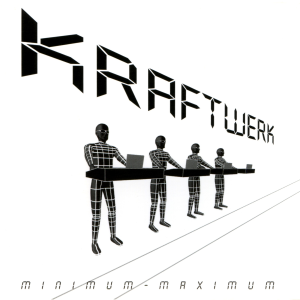It’s nice that major news outlets are saying what we nerds have been screaming for the past two decades. Microsoft only shares a small portion of the blame for the recent outage (they could have built their OS better so software vendors don’t feel the need to use kernel modules, but the rest is on CrowdStrike) but we are too depenent on them.
f00f/eris
Here to follow content related to Star Trek, Linux, open-source software, and anything else I like that happens to have a substantial Lemmy community for it.
Main fediverse account: @f00fc7c8@woem.space
- 1 Post
- 82 Comments

 2·3 months ago
2·3 months agoIf my American university has a system in place for students that don’t own Windows, I would not be surprised if yours has a better one :)

 39·3 months ago
39·3 months agoLibreOffice has opened every DOC(X) the school has sent me, albeit imperfectly, and all assignments are turned in as PDFs, which I usually make using Markdown and LaTeX. I have had to use Office 365 for collaboration, but only about twice a year, and that runs very smoothly in Firefox. On one occasion I tried to collaborate with CryptPad, but it didn’t work as well as I hoped.
Most computer labs at my uni run Windows 10, rarely 11, but a lot of the science labs run Linux.
The most frustrating thing has been the lockdown browser used for some exams. My university library has computers I can borrow for exams, but yours might not, and they detect VMs, so you might have to dual boot for that.

 3·3 months ago
3·3 months ago“Move Along Home” would work so much better as a Doctor Who episode. Has a kind of absurdity that is perfect for Who, but stands out in a bad way in Trek.

 4·3 months ago
4·3 months agoI don’t have much PC building experience, but these specs seem sufficient. Only comment is that you might need to use a distro with a new-ish kernel and graphics stack, given the very recent CPU and GPU. So not Debian stable, but Fedora, Ubuntu, or any rolling release distro will be fine.

 27·3 months ago
27·3 months agoNormal, plug and play mice last a long time, with or without firmware updates, which are typically free. I guarantee that nobody will buy this mouse, and if it does release it will stop receiving updates within six months.

 5·3 months ago
5·3 months agoHandbrake will probably still work if you compile it from source, but it seems like upstream isn’t paying much attention to libdvdcss support.
The version in Debian’s repo still works for me, anyway.

 5·4 months ago
5·4 months agoIf you haven’t set up this laptop yet, then I’d suggest installing a server-oriented distro like Debian, AlmaLinux, or Ubuntu Server. Those have minimal install options that come without a desktop environment installed, as most servers do not need one. If you’d like to make the install harder for yourself, this might be a good excuse to give Arch Linux or Gentoo a try, as those have the option of a fully manual install. If you’d like, you can install a desktop environment afterwards using the package manager.
If you already have a Linux with a graphical desktop installed, you can configure the system not to automatically start it with
sudo systemctl set-default multi-user.target. (Do not do this on your main device!) You can re-enable it withsudo systemctl set-default graphical.target.Regardless, you can then start a graphical session using
startx, or whatever command is more appropriate for your desktop environment (gnome-sessionto start GNOME on Wayland,startplasma-waylandto start KDE Plasma), or bysudo systemctl starting your login screen manager (sddm, gdm, lightdm, etc).
I’m currently on the RHCSA path myself, and I can tell you that the courses are not worth the thousands that Red Hat charges. There are plenty of unofficial video courses on YouTube and Udemy and study guides and practice tests on GitHub that are free or cheap, and other resources for every individual study topic, which will be good enough.
However, though I can’t speak from experience, it seems like the cert itself will look good enough on a resume to justify the investment of $500 and a month of studying.
Assuming you mean the Beelink S12 (which is the first thing that comes up in a search for “n100 mini pc”), that’s quite similar to my own computer specs, which can run just about any distro, with enough resources to spare for a VM or two. I don’t think it’s necessary to go really lightweight or pick something special. If there’s a distro you’re already familiar with and know you can do all of those things on, install that.
If you like Garuda, you could always try a different Arch spin which is lighter out of the box, like CachyOS or EndeavourOS.
Windows 8.1 was my last version before I made the switch. Windows 8 was horrible. The Metro UI broke all my habits from Windows XP from 7 while also making it harder to tweak my system. By the time 8.1 came out, I’d found enough ways around the main annoyances that its improvements were moot, but many issues remained, such as the bloatware bundled with my PC, and frequent slowness and instability.
As for why I switched, I was attracted by the free software ideal, and trying to get away from Windows, and I had watched and read several things that further convinced me it was superior, but I think the ultimate reason was that I had become hyperfixated on Linux. Thankfully, in this case, autism did not steer me wrong. My level of obsession with Linux has declined, but I still enjoy using my computer much more than I ever did or would on Windows.

 4·4 months ago
4·4 months agoI have the same problem at my school, but thankfully, the school library has laptops I can borrow with the lockdown browser installed. It isn’t ideal, but is there a similar arrangement you could make?

 41·4 months ago
41·4 months agoUnlikely. While in theory someone could create a compatibility layer, it would be quite a challenge, as obviously, kernel modules are very closely tied to the specific kernel. I did some web searches, and only found the same few dead projects (that didn’t completely solve this issue anyway) that you found, and other forum posts that offer little encouragement.
Make sure you have the latest version of Windows 10 or 11, and the latest drivers for your network hardware. If you do, then there’s probably not much you can do about this.

 6·4 months ago
6·4 months agoActually, I wonder if this show was greenlit in some way because of Prodigy’s cancellation. They’re trying to draw in a younger audience for the sake of the franchise’s long term prospects, but Prodigy didn’t get as many views on Paramount+ as they hoped (and is now on a different service), so they wanted to make a version of that which is better suited to streaming, without the awkward concessions to Nickelodeon’s release schedule.
Though, I think the problem is really Paramount+. A streaming service that is best known for Star Trek and a bunch of dramas that old people watch, is unlikely to get anyone under 30 to subscribe to it for Star Trek.

 23·4 months ago
23·4 months agoPersonally, I’ve had no problems whatsoever running the Office 365 apps needed by my school on Debian’s version of Firefox ESR. Aside from Outlook and Teams, I’m not asked to use them very often, as most assignments are turned in as PDFs, but when I have been required to use Word and Excel, I have had no problems.
Apparently GNOME 46 introduced support for Microsoft 365 accounts including OneDrive support in the file manager, so a distro that runs a recent GNOME version, such as Fedora or Ubuntu, may be your best option. But without that, you can still use a third-party project like onedriver or abraunegg’s OneDrive client.
What is a “must have” depends on your use case, personal preferences, and the shortcomings of your distro’s default configuration (I’ve never used Cachy so I don’t know what’s missing).
For myself, I usually end up installing VLC and Strawberry Media Player, since the media players most distros come with aren’t as good. On non-GNOME distros I tend to install GNOME Disks as it’s the least painful to use of the GUI partitioning tools I have used. My preferred rich text format is Markdown, for which I use ghostwriter. I also usually install a few FOSS games to pass the time with - my favorites are Freedoom, SuperTux, SuperTuxKart, and Xonotic - and RetroArch for emulation.

 4·4 months ago
4·4 months agoBit confused about what you’re looking for. If you’re just SSH/VNC ing into devices on the same local network, then you can simply use their local IP address, which you can find with a command like
ip addrand will rarely change, or their hostname if your network is configured properly. There are several GUIs that can remember connection info for you, so you likely will only need it once. It’s also quite easy to scan the local network for SSH servers if you have nmap (nmap -p22 <your ip address range, e.g. 192.168.0.1/24>). If you need to connect to a device on your home network from a different network, any VPN software can achieve that. I’m not aware of any remote desktop solution that doesn’t require a network connection, but your network doesn’t necessarily need to be connected to the Internet.Are you looking for a GUI that combines all those things?
Doom was officially ported to Linux in 1994, and a modified version of Linux Doom was made source-available in 1997, then open-source (GPLv2) in 1999. It was one of the first high-quality open-source games. Those versions do not work on current Linux distros, but they have enabled modern source ports such as PrBoom+ and Chocolate Doom to be developed, and those are available in nearly every distro’s repository.


“I can’t stop the heterocyclic declination!” (TNG: “Samaritan Snare”)